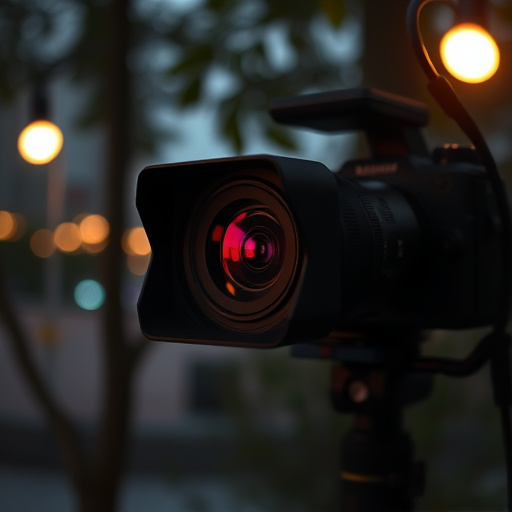Battery-powered covert nanny cameras offer discrete monitoring solutions for homes and offices, integrating seamlessly into surroundings as everyday objects with wireless real-time feeds accessible via smartphone apps. Signal scanning techniques, including frequency analysis, thermal imaging, and RF signal detection, are vital for ensuring effectiveness and undetectability, especially in large or complex structures. Legal and ethical considerations, such as privacy laws and informed consent, must be addressed to use these devices responsibly while fostering peace of mind in the digital era.
Uncover the hidden with a deep dive into the world of battery-powered covert nanny cameras and their detection. This comprehensive guide explores advanced signal scanning methods designed to identify these invisible intrusions. From understanding the technology behind battery-powered nanny cams to mastering common detection techniques, we equip you with knowledge. Discover cutting-edge strategies for uncovering hidden recording devices and navigate legal and ethical considerations surrounding their use.
- Understanding Battery-Powered Covert Cameras: A Brief Overview
- Common Signal Scanning Techniques for Detection
- Advanced Methods for Uncovering Hidden Recording Devices
- Legal and Ethical Considerations in Using These Technologies
Understanding Battery-Powered Covert Cameras: A Brief Overview
Battery-powered covert nanny cameras have become increasingly sophisticated, offering a discrete solution for monitoring home or office environments. These compact devices are designed to blend seamlessly into their surroundings, often resembling everyday objects like smoke detectors, light switches, or even fake rock formations. Their power source is a key feature; drawing energy from internal batteries allows for installation without the need for an external power supply, ensuring complete stealth.
This portability and autonomy enable users to place the cameras in hard-to-reach or covert locations, providing comprehensive coverage without raising suspicion. Nanny cams with wireless capabilities further enhance their appeal, offering remote access via smartphone apps, giving parents, caretakers, or security personnel a constant, real-time feed of protected areas.
Common Signal Scanning Techniques for Detection
In the realm of hidden recording devices, particularly battery-powered covert nanny cameras, signal scanning techniques play a pivotal role in ensuring their effectiveness and undetectability. One common method is frequency analysis, where scanners are designed to detect signals within specific bands used by these cameras. This involves tuning into the camera’s transmission frequency and identifying unique patterns or signatures that can be picked up even in noisy environments.
Another widely employed technique is signal strength monitoring. Scanners in this category measure the intensity of signals received from hidden cameras, often utilizing directional antennas to pinpoint their location. By mapping signal strengths across an area, users can identify potential camera positions, especially in large or complex structures where visual inspections might be limited. These techniques are crucial for professionals and individuals alike who require discreet monitoring using battery-powered covert nanny cameras.
Advanced Methods for Uncovering Hidden Recording Devices
In the quest to uncover hidden recording devices, especially battery-powered covert nanny cameras, advanced scanning methods have emerged as indispensable tools. These techniques go beyond traditional metal detectors and involve sophisticated technology like thermal imaging and RF (radio frequency) signal detection. Thermal imaging cameras, for instance, can reveal heat signatures of electronic devices, making it possible to detect hidden cameras that might be disguised as everyday objects.
RF signal scanning is another powerful method. Many covert cameras operate on radio frequencies, emitting signals that can be captured and analyzed using specialized equipment. This technique allows security professionals to pinpoint the source of these signals, leading them directly to the hidden recorder. By combining these advanced methods, thorough searches can be conducted to ensure no Battery Powered Covert Nanny Cameras go undetected, providing enhanced privacy protection and peace of mind.
Legal and Ethical Considerations in Using These Technologies
The use of hidden recording devices, such as battery-powered covert nanny cameras, raises significant legal and ethical concerns. In many jurisdictions, surveillance technologies must comply with privacy laws that protect individuals from unwarranted invasion of their personal space. Unauthorized installation or operation of these devices can result in severe legal repercussions, including fines and imprisonment. Additionally, the ethical implications are profound; using such technology without consent violates principles of trust and autonomy.
It is crucial for users to understand the legal framework surrounding hidden cameras to ensure compliance. This includes obtaining proper authorization, such as consent from individuals being monitored, and adhering to guidelines on data storage and retention. Ethical considerations necessitate transparency in the use of these devices, especially in sensitive environments like homes or workplaces, to maintain a balance between security needs and privacy rights.
Hidden recording devices, particularly battery-powered covert nanny cameras, pose unique challenges due to their discrete nature. While common signal scanning techniques like radio frequency (RF) detection and infrared (IR) imaging have proven effective, advanced methods leverage artificial intelligence (AI) for more accurate identification. As technology evolves, it’s crucial to balance the benefits of these tools with legal and ethical obligations, ensuring privacy rights are respected while navigating the complexities of modern surveillance.
